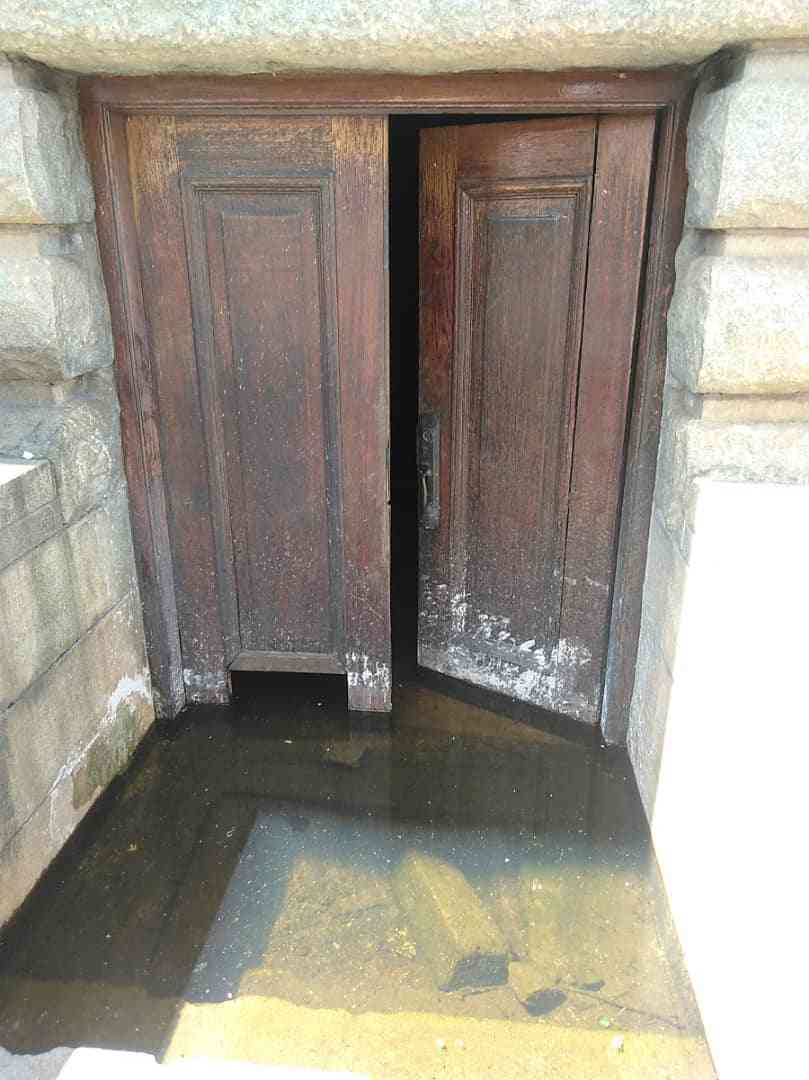
THERE are fears that historical documents dating back to the colonial era belonging to the City of Harare were destroyed when a river flowing along Julius Nyerere Way recently flooded the basement of the capital’s Town House.
Experts view the incident as evidence of neglect by local authorities in maintaining the city’s administrative building.
The Zimbabwe Electricity Transmission and Distribution Company has since switched off electricity at the landmark building, which is the city’s administrative office, for safety reasons.
Harare mayor Jacob Mafume confirmed to NewsDay that water found its way into the building.
“There has been a problem, remember there have been a lot of rains and there are cracks in the basement where water has seeped into the building,” he said.
“We had a meeting with the National Archives and the Art Gallery. There are some historical documents in that building that would need a certain type of draining to be done to preserve them.”
The Town House was built in 1933 and has served as the headquarters for the city council ever since.
Before independence it housed the Salisbury City Council.
- HCC considers cancelling ZimPhos contract
- We're not immune to prosecution: Land developer
- Govt to blame for Mupedzanhamo chaos
- City of Harare, Augur deal legit: Supreme Court
Keep Reading
After 1980, it became the Harare City Council's central office.
Town House is a significant landmark, not just for its administrative role but also as a symbol of Harare's development.
It represents the city's transformation from a colonial settlement to the capital of independent Zimbabwe.
Mafume added: “We are trying to co-ordinate a process where we would expertly remove the water without damaging the documentation that might be of historical importance to the city and historians.
“So, there are experts who are assisting us in removing the water.”
Mafume revealed that most buildings in the capital are on wetlands hence there is constant need to pump out water.
“The whole of Harare was built on a wetland,” he said.
Parts of Borrowdale, Marlborough, Bluffhill, Monavale, Mabelreign, Chishawasha Hills, Vainona, Mabvuku, Tafara, Rugare, Kambuzuma and Budiriro, among other suburbs in the low-and high-density areas, are built on wetlands.
“Harare was built on its water sources and you find a lot of rivers originating from Harare, there is a river running under Julius Nyerere Way and we have Mukuvisi and other various rivers going to Mazowe and Mt Pleasant,” Mafume said.
“There is always a debate on this issue of building on wetlands.
“That is why we recycle the water from Lake Chivero because it comes and flows from Lake Chivero from Harare,” he said.
According to the local authority, several buildings in the central business district are dilapidated and poorly maintained.
Accidents resulting from structural failure are common.
Last week, a building collapsed in downtown Harare killing one person and injuring six others.
The incident came days after the local authority gave property owners a 14-day ultimatum to spruce up their buildings.
The local authority wants property owners to “renew or regenerate their buildings and/or properties either through repairs, refurbishments and/or repainting”.
In a notice to property owners, the local authority said model building by-laws stated that “no person shall allow any building constructed upon premises of which he is the owner or occupier to become… a danger to the health of persons occupying or using the building or to the health of the public.”











